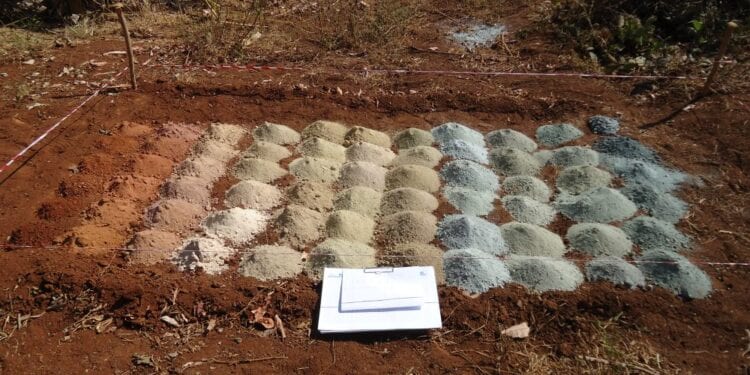Maiden Campaign Targeting Nickel And PGM Metald
Katoro Gold plc (AIM:KAT) has kicked off a maiden drill programme targeting the nickel and platinum group metals (PGM) at the Haneti Nickel Project in Tanzania. Katoro holds a 65% interest in Haneti with 35% held by Power Metal Resources plc (LON:POW).
The campaign will feature 2000m of Rotary Air Blast (RAB) drilling over 50 holes to circa 40 metres depth per hole.
Chairman Louis Coetzee said the RAB drill holes will be drilled on profiles across the three target areas in order to provide enhanced information of the subsurface shape and orientation of the ultramafic rock bodies being targeted and allowing for the optimisation of a planned follow-on diamond drill programme.
“We are very excited to see the first exploration drill programme at Haneti now underway and look forward to updating shareholders as the work progresses.”
The Haneti Nickel Project covers an area of approximately 5000 sq. km in central Tanzania approximately 88 km north of the capital city Dodoma. It comprises tenements (prospecting licences, offers and applications) prospective for nickel, PGMs and gold.
One of the key exploration objectives for the JV partners at Haneti is to delineate the potential for economic nickel mineralisation on the linear dyke-like, Haneti-Itiso Ultramafic Complex (HIUC), which sporadically crops out over a strike length of 80 km through the centre of the tenement holding.
The HIUC mainly comprises serpentinites (metamorphosed ultrabasic rocks such as dunite and peridotite), with metabasic rocks such as metagabbro and metadolerite and is being targeted for a Chonolith-Type Nickel exploration model.
An initial three target areas have been selected for RAB drilling: Milhanza Hill; Mwaka Hill; and Igari Hill. These targets are based on the recommendations of the 2012 AEM survey, the detailed field programme undertaken in 2013, and further supplementary exploration findings.
The programme will seek to verify the existence of near surface nickel sulphide mineralisation at each target whilst increasing the geological understanding such that the orientation and the meterage of a planned follow-up diamond drill programme can be optimised to confirm the scale of any nickel sulphide mineralisation.
The drilling will be conducted by an experienced Tanzanian company in line with international best practice and in accordance with health and safety and COVID-19 precautions.
The Haneti area was first explored in 1931 by a private prospector who collected a nickel‐rich magnetite sample at Mihanza Hill. Later trenching uncovered a few discontinuous, green‐stained veins rich in nickel‐silicates and containing several percent nickel.
In the early 1960s, the Geological Survey of Tanzania carried out mapping, pitting, soil sampling, trenching and rock chip sampling of ultramafic outcrops on the Zoani, Mindii and Mihanza hills, within the HIUC belt.
Further geological mapping and sampling was undertaken in 2006, 2007 and in 2013. Additionally, an airborne electromagnetic (“AEM”) geophysics survey was completed over the Mihanza and Mwaka Hill anomalies in 2012 with further geophysics flown in 2015.
A study commissioned with a consultant expert in ultramafic geochemistry in 2015 identified the nickel, copper, platinum, palladium anomaly at Mihanza Hill as a drill ready target. This report suggested that the Itiso‐Haneti Ultramafic body may fit the Chonolith-Type Nickel exploration model, which would imply that the main ultramafic belt may have small discrete sulphide bodies associated with it.
In 2019, several soil samples collected during the 2013 exploration programme were sent for analysis and the results confirmed the existing knowledge base and also identified a new ultramafic subcrop.












